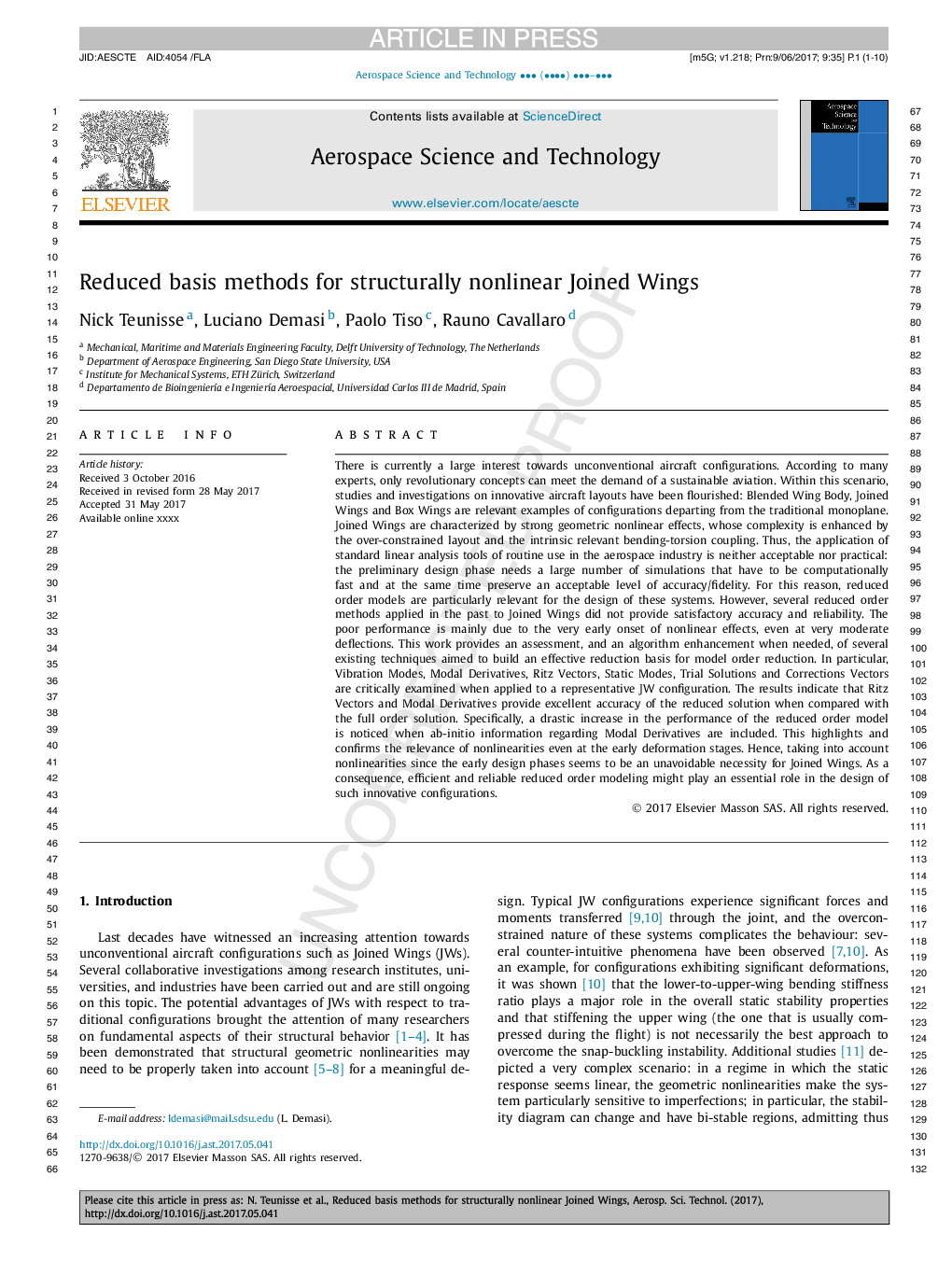| Article ID | Journal | Published Year | Pages | File Type |
|---|---|---|---|---|
| 5472933 | Aerospace Science and Technology | 2017 | 10 Pages |
Abstract
There is currently a large interest towards unconventional aircraft configurations. According to many experts, only revolutionary concepts can meet the demands of a sustainable aviation. Within this scenario, studies and investigations on innovative aircraft layouts have been flourished: Blended Wing Body, Joined Wings and Box Wings are relevant examples of configurations departing from the traditional monoplane. Joined Wings are characterized by strong geometric nonlinear effects, whose complexity is enhanced by the over-constrained layout and the intrinsic relevant bending-torsion coupling. Thus, the application of standard linear analysis tools of routine use in the aerospace industry is neither acceptable nor practical: the preliminary design phase needs a large number of simulations that have to be computationally fast and at the same time preserve an acceptable level of accuracy/fidelity. For this reason, reduced order models are particularly relevant for the design of these systems. However, several reduced order methods applied in the past to Joined Wings did not provide satisfactory accuracy and reliability. The poor performance is mainly due to the very early onset of nonlinear effects, even at very moderate deflections. This work provides an assessment, and an algorithm enhancement when needed, of several existing techniques aimed to build an effective reduction basis for model order reduction. In particular, Vibration Modes, Modal Derivatives, Ritz Vectors, Static Modes, Trial Solutions and Corrections Vectors are critically examined when applied to a representative JW configuration. The results indicate that Ritz Vectors and Modal Derivatives provide excellent accuracy of the reduced solution when compared with the full order solution. Specifically, a drastic increase in the performance of the reduced order model is noticed when ab-initio information regarding Modal Derivatives are included. This highlights and confirms the relevance of nonlinearities even at the early deformation stages. Hence, taking into account nonlinearities since the early design phases seems to be an unavoidable necessity for Joined Wings. As a consequence, efficient and reliable reduced order modeling might play an essential role in the design of such innovative configurations.
Related Topics
Physical Sciences and Engineering
Engineering
Aerospace Engineering
Authors
Nick Teunisse, Luciano Demasi, Paolo Tiso, Rauno Cavallaro,
